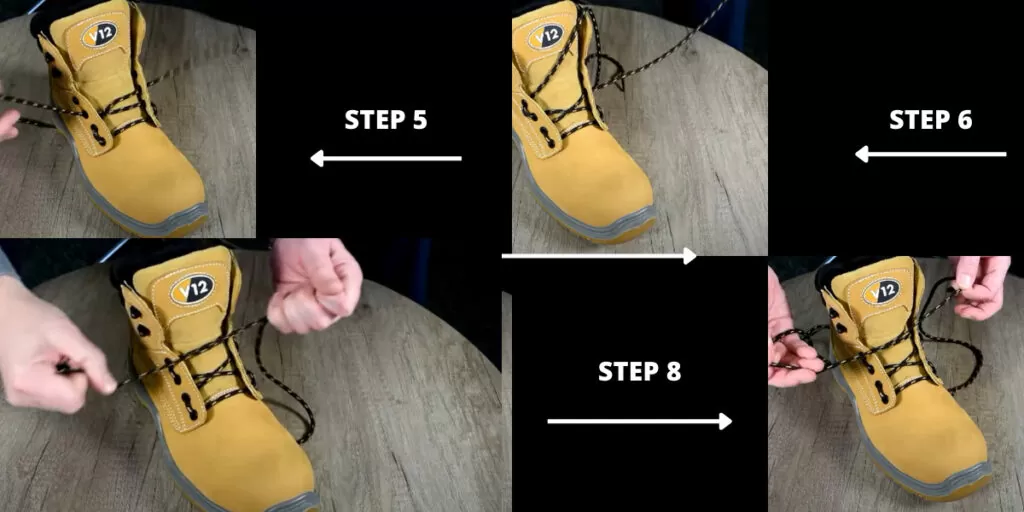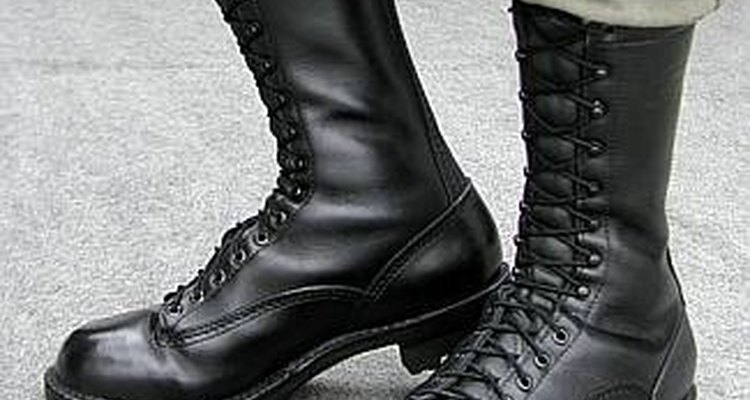The Importance of Proper Boot Lacing in Military Settings
In military settings, proper boot lacing is crucial for optimal performance and comfort. Military personnel often find themselves in demanding environments, where every aspect of their gear, including their boots, can make a significant difference. One of the most critical components of a military boot is its lacing system, which can affect the overall fit, support, and durability of the boot. When boots are not laced correctly, it can lead to a range of issues, including ankle instability, blisters, and discomfort. This, in turn, can compromise a soldier’s ability to perform their duties effectively, putting them and their team at risk.
Proper boot lacing is essential for maintaining ankle support, which is critical in military settings where soldiers may be required to navigate challenging terrain or engage in high-impact activities. A well-laced boot provides the necessary stability and support to prevent ankle rolls and sprains, allowing soldiers to move with confidence and agility. Furthermore, proper lacing helps to prevent blisters and hotspots, which can be debilitating and painful. By understanding the importance of proper boot lacing, military personnel can take the necessary steps to ensure their boots are laced correctly, providing them with the comfort, support, and confidence they need to perform at their best. In fact, learning how to lace military boots correctly can make a significant difference in their overall performance and comfort during long marches and deployments.
Understanding the Different Types of Military Boots and Their Lacing Systems
Military boots come in various styles, each designed to meet specific needs and environments. Understanding the different types of military boots and their unique lacing systems is essential for choosing the right boot for the job and learning how to lace military boots effectively. Here, we’ll explore the key features and benefits of combat boots, jungle boots, and dress boots, as well as their distinct lacing systems.
Combat boots, designed for rugged terrain and high-impact activities, typically feature a more aggressive tread pattern and a higher ankle collar for added support. Their lacing system often includes a combination of eyelets and speed lacing hooks, allowing for quick and secure tightening. Jungle boots, on the other hand, are designed for hot and humid environments, with breathable materials and a lower ankle collar for improved ventilation. Their lacing system may include a simpler, more minimalist design to reduce weight and enhance airflow. Dress boots, used for ceremonial or formal occasions, often feature a more polished finish and a sleeker design. Their lacing system may include a more traditional, ornamental approach, with a focus on aesthetics rather than functionality.
Each type of military boot has its unique lacing system, and understanding these differences is crucial for achieving a secure and comfortable fit. By recognizing the specific features and benefits of each type of boot, military personnel can choose the right boot for their needs and learn how to lace military boots effectively, ensuring optimal performance and comfort in any environment.
How to Choose the Right Lacing Technique for Your Military Boots
When it comes to lacing military boots, there are several techniques to choose from, each with its own advantages and disadvantages. Understanding the different lacing techniques is crucial for achieving a secure and comfortable fit, and for mastering the art of how to lace military boots. Here, we’ll explore the “bunny ear” method, the “lace lock” method, and the “quick lace” method, providing an overview of each technique and its benefits.
The “bunny ear” method is a popular choice among military personnel, as it provides a secure and comfortable fit. This technique involves creating two loops with the laces, which are then tied together to form a secure knot. The “bunny ear” method is ideal for those with high arches or narrow feet, as it allows for a more customized fit. However, it can be time-consuming and may not be suitable for rapid deployment situations.
The “lace lock” method, on the other hand, is a faster and more efficient technique. It involves tying the laces in a series of knots, which are then locked in place to prevent loosening. This method is ideal for those who need to quickly lace their boots, but it may not provide the same level of customization as the “bunny ear” method.
The “quick lace” method is a hybrid of the “bunny ear” and “lace lock” methods, offering a balance between speed and customization. This technique involves creating a single loop with the laces, which is then tied to the boot’s eyelets. The “quick lace” method is ideal for those who need a fast and secure fit, but may not be suitable for those with unique foot shapes or sizes.
When choosing a lacing technique, it’s essential to consider factors such as foot shape, size, and personal preference. By understanding the advantages and disadvantages of each technique, military personnel can choose the right method for their needs and master the art of how to lace military boots.
Step-by-Step Guide to Lacing Military Boots: A Beginner’s Tutorial
Learning how to lace military boots can seem daunting, but with a step-by-step guide, anyone can master the art of boot lacing. In this tutorial, we’ll focus on the “bunny ear” method, a beginner-friendly technique that provides a secure and comfortable fit.
Step 1: Begin by holding the boot in your non-dominant hand and the laces in your dominant hand. Pull the laces out of the boot and hold them apart, with the aglets (the plastic or metal tips) facing away from you.
Step 2: Cross one lace over the other, forming an “X” shape. Take the lace that is now on top and wrap it around the bottom lace, forming a loop.
Step 3: Take the top lace and pass it through the loop you just created. Pull the lace gently to tighten the knot.
Step 4: Repeat steps 2 and 3 with the other lace, creating a second loop and passing it through the first loop.
Step 5: Pull both laces gently to tighten the knot. You should start to see the “bunny ear” shape forming.
Step 6: Take one of the laces and pass it through the eyelet of the boot. Pull the lace gently to secure it in place.
Step 7: Repeat step 6 with the other lace, passing it through the eyelet and pulling it gently to secure it in place.
Step 8: Pull both laces gently to tighten the knot and adjust the fit as needed.
By following these steps, you’ll be able to master the “bunny ear” method and learn how to lace military boots like a pro. Remember to practice regularly to perfect your technique and achieve a secure and comfortable fit.
Tips and Tricks for Achieving a Secure and Comfortable Fit
Mastering the art of how to lace military boots is just the first step in achieving a secure and comfortable fit. Here are some additional tips and tricks to help you get the most out of your military boots:
Adjusting the Lacing for Different Foot Shapes and Sizes: Everyone’s foot is unique, and what works for one person may not work for another. To accommodate different foot shapes and sizes, try adjusting the lacing to create a more customized fit. For example, if you have a narrower foot, you may want to tighten the laces more to prevent slipping. If you have a wider foot, you may want to loosen the laces to accommodate your foot shape.
Preventing Blisters and Hotspots: Blisters and hotspots can be a major issue when wearing military boots, especially during long marches and deployments. To prevent blisters and hotspots, make sure to wear moisture-wicking socks and apply blister prevention products to high-friction areas. You can also try adjusting the lacing to reduce pressure on sensitive areas.
Using the Right Lacing Material: The type of lacing material you use can make a big difference in the comfort and security of your military boots. Look for laces made from durable, breathable materials that can withstand the rigors of military use.
Breaking in Your Boots: Breaking in your military boots is an essential step in achieving a comfortable fit. Try wearing your boots for short periods of time and gradually increasing the duration to help your feet adjust to the new footwear.
By following these tips and tricks, you can take your military boot lacing skills to the next level and achieve a secure and comfortable fit that will last all day long. Remember to practice regularly and experiment with different lacing techniques to find what works best for you.
Common Mistakes to Avoid When Lacing Military Boots
When it comes to how to lace military boots, there are several common mistakes that can lead to discomfort, blisters, and even injuries. By avoiding these mistakes, you can ensure a secure and comfortable fit that will last all day long.
Over-Tightening: One of the most common mistakes when lacing military boots is over-tightening. This can lead to restricted blood flow, blisters, and discomfort. To avoid over-tightening, make sure to lace your boots in a way that provides a snug fit without being too constricting.
Under-Tightening: On the other hand, under-tightening can lead to a loose fit that can cause blisters and discomfort. To avoid under-tightening, make sure to lace your boots tightly enough to provide support and stability.
Inconsistent Lacing: Inconsistent lacing can lead to uneven pressure and discomfort. To avoid inconsistent lacing, make sure to lace your boots in a consistent pattern, using the same amount of tension on each lace.
Not Adjusting for Different Terrain: Failing to adjust your lacing for different terrain can lead to discomfort and blisters. For example, if you’re going to be marching on rough terrain, you may want to lace your boots more tightly to provide extra support.
By avoiding these common mistakes, you can ensure a secure and comfortable fit that will help you perform at your best. Remember to practice regularly and experiment with different lacing techniques to find what works best for you.
Maintenance and Care of Military Boots: How Lacing Affects Durability
Proper maintenance and care of military boots are crucial to extend their lifespan and ensure optimal performance. One often overlooked aspect of boot maintenance is the impact of lacing on durability. When learning how to lace military boots, it’s essential to consider how lacing affects the overall condition of the boots.
Improper lacing can lead to premature wear and tear on the boots, causing them to deteriorate faster. For example, over-tightening can cause the laces to fray and break, while under-tightening can lead to excessive movement and wear on the boot’s materials. By learning how to lace military boots correctly, you can prevent these issues and extend the life of your boots.
To maintain your military boots, follow these simple tips:
Clean your boots regularly using a soft-bristled brush and mild soap. Avoid using harsh chemicals or abrasive materials that can damage the boot’s materials.
Condition your boots regularly to keep the leather or synthetic materials supple and resistant to water and dirt.
Store your boots in a cool, dry place away from direct sunlight. Avoid stacking boots on top of each other, as this can cause creasing and damage to the materials.
By following these simple maintenance and care tips, you can extend the life of your military boots and ensure they continue to perform optimally. Remember, proper lacing is just one aspect of boot maintenance, and by combining it with regular cleaning, conditioning, and storage, you can get the most out of your boots.
Conclusion: Mastering the Art of Boot Lacing for Military Success
In conclusion, mastering the art of boot lacing is a crucial aspect of military preparation and success. By understanding the importance of proper boot lacing, choosing the right lacing technique, and following a step-by-step guide, military personnel can ensure a secure and comfortable fit that will last throughout their deployment.
Additionally, by avoiding common mistakes, incorporating tips and tricks, and maintaining their boots properly, military personnel can extend the lifespan of their boots and optimize their performance. Remember, learning how to lace military boots is a skill that requires practice and patience, but the benefits are well worth the effort.
By following the guidelines and techniques outlined in this comprehensive guide, military personnel can master the art of boot lacing and gain a competitive edge in their military careers. Whether you’re a seasoned veteran or a new recruit, understanding how to lace military boots is an essential skill that will serve you well in any military setting.
So, take the time to practice and perfect your lacing technique, and reap the rewards of a secure, comfortable, and high-performing fit. With the right skills and knowledge, you’ll be ready to take on any challenge that comes your way, and achieve success in your military endeavors.








